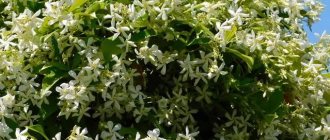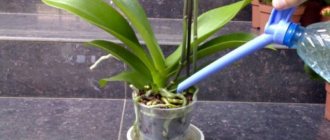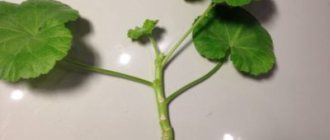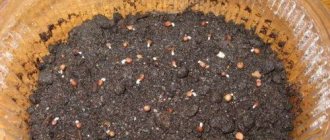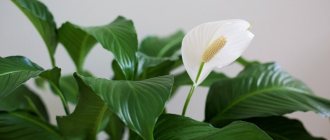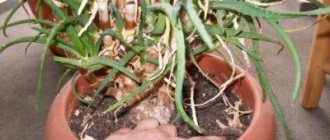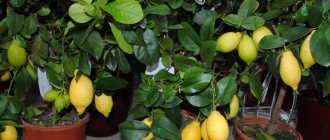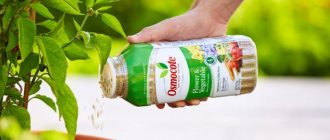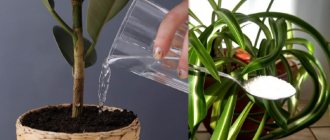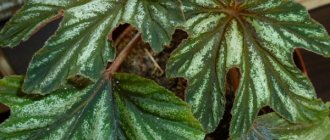Yantarin VRK - description of the product and active ingredients
Water-soluble cone is a natural growth stimulator that is used both for indoor flowers and for fruit and berry garden crops. Its use is guaranteed to activate the vital activity of all plants, accelerate the process of flowering and fruit ripening, and also increase productivity.
In addition to accelerating growth, Amber helps plantings become more resistant to diseases and various unfavorable conditions (for example, temperature changes, frosts, lack of water, etc.)
When using this growth regulator, soil microflora is normalized, and less nitrates accumulate in plant tissues.
The active ingredient of the drug is succinic acid in a dosage of 5 grams per liter. We talk in detail about the benefits of this substance in the article Succinic acid for indoor flowers: application and reviews.
When is the drug used?
Aqueous solutions of a growth stimulator from a domestic manufacturer are used at any stage of plant growth - from soaking seed material to processing fruit-bearing crops. It is used for spraying green mass, soaking the root system, and treating the crown of ornamental shrubs.
What plants is it suitable for?
Amber is successfully used for many types of garden and house plants:
- Strawberries
- Grape
- Apple trees
- Pears
- Currant
- Gooseberry
- Peach
- Plum
- Flower crops (annual and perennial)
- Home indoor plants
The use of Amber for indoor plants improves their gas exchange and cell metabolism, due to which the metabolic process is accelerated, the plant receives more energy and develops faster. This becomes possible thanks to the succinic acid contained in the fertilizer.
Instructions for use for plants - how to propagate
The drug is diluted with water according to the instructions. Spraying should be carried out in the morning or evening hours, in calm weather. Mixing with other insecticides and pesticides is not recommended.
It is necessary to spray crops with Amber while wearing gloves, safety glasses and a respirator, avoiding contact of the drug with the skin. Make sure there are no children or pets nearby.
How to use the drug “Yantarin, VRK” for all types of plantings is indicated in the table:
Treatment of plants with Amber occurs by watering at the root and spraying. For indoor flowers, wiping the leaves with a cotton swab dipped in Amber and bathing the roots in the solution is also used (often used for orchids).
When to treat plants
Plantings should be sprayed and watered with Amber during the growing season.
It is necessary to spray the plantings in the morning or evening hours to minimize the loss of the drug from the leaves due to active sunlight. It is preferable to spray in the evening, since in this case the harm to bees is also minimized (during the night the drug will be absorbed as much as possible and the bees will not collect it).
House flowers should be watered with Amber solution at the root so as not to touch the leaves:
How to use VRK
The product is used during the period of mass flowering of tomatoes. To process tomatoes:
- dilute 50 ml in 5-6 liters of water;
- Bushes are irrigated at the rate of 10 liters per 100 m2.
One treatment is carried out per season. This is enough for a powerful anti-stress effect.
After irrigation, a large number of set fruits are noted, the brushes become stronger and do not break off. Tomatoes bear fruit consistently regardless of unfavorable weather conditions - extreme heat and drought or rain and high humidity.
There is no waiting period in days: the product does not accumulate in the fruits.
Application of Amber for orchids
Everyone knows that orchids are extremely capricious flowers that take root at home only with a few “selected” gardeners. But this product will help orchids to take root well and will increase the chance of breeding them at home by at least 2 times.
Method of using Amber for orchids:
- Stimulating watering at the roots is carried out once every 3-4 weeks, and only during the active growing season of plants. Keep in mind that watering sleeping orchids with Amber or any other stimulant simply means killing them! Dosage – 20 ml of concentrate per 1 liter of water. Water directly under the root, in small portions, at intervals of 1-3 hours.
- Soaking orchid roots before planting or replanting the bulb. We advise you to carry out this action together with wiping the leaves. The solution is prepared in the same way as for watering at the root. The roots of healthy orchids are soaked in the solution for half an hour; if the orchid is replanted because it is withering, the roots should be soaked for 2-2.5 hours.
Note! Orchids revived by Yantarine or other growth stimulants are prohibited from being planted in a solid container or artificial substrate until their constant flowering is restored.
Succinic acid for indoor plants
In some ways, this is even an indispensable remedy for indoor flowers. Succinic acid quickly revives stunted plants, stimulates budding, growth of green mass, and strengthening of roots. The substance is often used to treat exotic specimens.
How to treat indoor flowers with succinic acid. Let's look at the example of several plants.
Orchids
Gardeners who are passionate about growing orchids often use acid to eliminate the consequences of improper care. For an orchid, both overmoistening and excessive dryness are equally detrimental. Beginners often cannot guess the golden mean in watering, which is why the roots of the plant suffer greatly.
If this happens, it is recommended to treat the plant with a solution of succinic acid (1 tablet per 0.5 liters of water at room temperature). First, spray the lower leaves, carefully moisten the root collar, water the plant with the rest of the solution, evenly distributing it over the entire area of the nutrient substrate. It is recommended to treat the roots of the plant with the same solution when replanting.
Violets
Probably no plant responds as sensitively to the effects of succinic acid as indoor violets do. Feeding the plant with this substance transforms the plant before our eyes. The leaves become strong, the flowering is lush and long-lasting.
Feeding violets with succinic acid can be carried out systematically according to a certain scheme:
- before flowering, when the buds just begin to appear, the flower should be sprayed with a 0.02% solution;
- when the plant stops blooming, the same solution is applied once a month by watering. Experienced gardeners sometimes feed violets with a mixture of succinic acid and potassium humate, taken in equal proportions;
- to stimulate rooting, violet cuttings are immersed 2 cm in the solution and left for 2 hours.
If for some reason the plant begins to turn pale and wither, in combination with resuscitation procedures (transplantation, choosing another place for the plant to “live”, correcting watering), you can carry out unscheduled spraying of the most affected leaves.
Spathiphyllum
Succinic acid acts on the flower primarily as a growth stimulator. The plant is fed 2 times a month with a working solution of 0.02%, steadily, throughout the spring and the first half of summer.
Where to buy and price of the stimulator
Since this is a very popular and widespread remedy, you can buy “Yantarin, VRK” in any garden store (where seeds, seedlings, etc. are sold), in large supermarkets (Leroy Merlin, Auchan, Perekrestok, Magnit Family, etc.). etc.), as well as in online stores (but make sure that the online store has a free pick-up point in your city, otherwise you will pay more for delivery than for the drug itself).
The product is available in several volumes:
- 100 ml. – from 60 rubles.
- 500 ml – from 250 rubles
Reviews from gardeners about Yantarin VRK
- Elena Dmitrievna. What I appreciate most about Yantarine is that it is a natural product and it is safe for people, animals and nature. I grow tropical plants at home - and they are notoriously capricious. In winter, it is very difficult to preserve them because of the dry air from the radiators - before, I either dried out or flooded my flowers, and it was a lot of pain. A neighbor advised me to try this remedy (and, in principle, Succinic Acid) - she was a biologist and worked in phytosanitary supervision, so I trust her. Of course, I bought the product, read the book with instructions that was stuck on the back - I’m delighted, why didn’t I know about it before? I won’t describe it, it’s all easy to find. In my case, it helped regulate excess and lack of moisture, from which my plants previously suffered so much. This preparation can be used in several ways: watering at the root gives rapid growth and formation of greenery. Treating seeds with it gives increased germination. Treatment of cuttings increases root formation. The main thing is to use it no later than 15-20 minutes after dilution, otherwise the succinic acid will evaporate.
- Valentina. I want to share my delight with this growth stimulator - a miracle remedy! I once bought myself an orchid at Ikea, on sale. Of course, it was already inferior - the leaves were yellow and hanging, there were almost no roots. I decided to nurse. Watered by immersing in a warm solution. The turgor became stronger, the roots began to grow, my orchid survived! I saved her, I’m very proud! But without Yantarina, naturally, it would not have worked. So this is a powerful remedy, tested on myself and I recommend it to everyone from the bottom of my heart!
Useful articles:
Reviews
Ekaterina, Kamen-on-Obi. “I’ve been meaning to try succinic acid for a long time to boost the immunity of flowers. I bought it at the pharmacy, it wasn’t expensive at all, which made me very happy. I watered and sprayed my violets, as well as other plants, according to the instructions. A month later, I also noticed that the leaves became bright green and the bush was lush. Now, after purchasing, I also treat all new flowers with succinic acid. This flower tolerates stress more easily and in rare cases begins to hurt. So I'm very pleased."
Stanislav, Ivanovo. “They gave me a young rosette and it soon fell ill with bacteriosis; within a day the stem turned brown and the disease began to spread to the leaves. I just didn't know what to do to save the flower. They advised to spray it with succinic acid. This stopped the spread of infection. As a result, I managed to root the top of the violet. But bacteriosis could destroy a flower in just one day.”
Margarita, Ulyanovsk. “As soon as I noticed that the Uzambara violet began to grow poorly, was producing weak leaves, and was not blooming, I decided to test succinic acid and watered it twice a month. Three months later, the violet bloomed for the first time, it was a real miracle. It became noticeable how the color of the leaves became saturated with green. We can conclude that the drug really works.”
